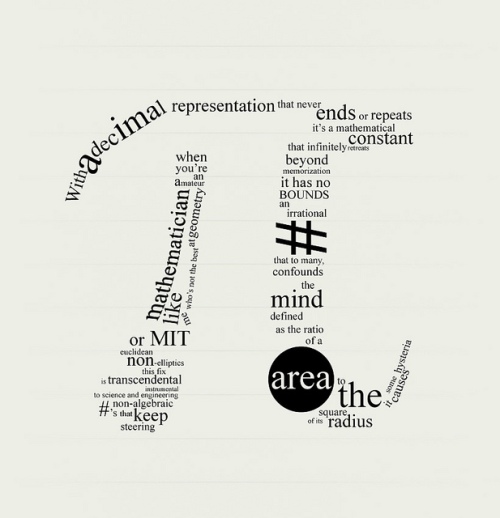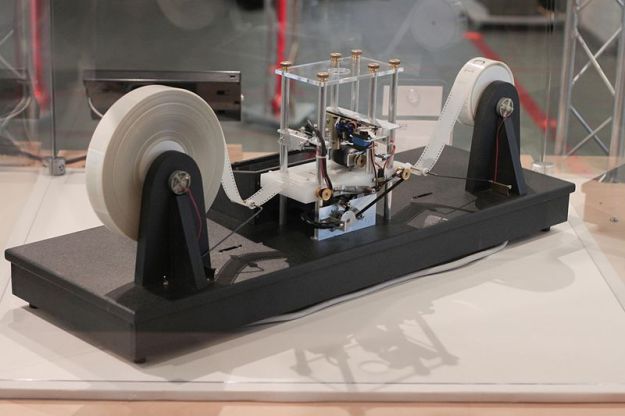The history of mathematics has been fraught with disappointments for mathematicians. This is particularly true in regard to the expected and continued failure of numbers, and math in general, to be pure and graceful. The Pythagoreans, in 6th century BCE Greece, venerated the whole numbers with an almost religious devotion because of their purity, and believed that the universe could be described by using only whole numbers. Unfortunately, math is not as pure as the Pythagoreans thought, which was revealed first by Hippasus of Metapontum when he discovered an undeniable proof for the existence of irrational numbers. Incidentally, Pythagoras had poor Hippasus drowned because of this. (The tale of the drowning of Hippasus may be merely a legend, like much of what is “known” about the Pythagoreans, due to a lack of reliable sources from the period.) Another impurity of numbers was wrestled with for millennia in the form of the square roots of negative numbers, a problem that was only put to rest with the advent of the imaginary number i. However, numbers turned out to be even weirder than previously imagined, because transcendental numbers were discovered by Gottfried Wilhelm Leibniz, in 1682.
In order to understand transcendental numbers, we need to understand algebraic numbers, or numbers that are not transcendental. An algebraic number is any number that is the solution to a polynomial with rational coefficients. Rational numbers are numbers that can be written as the ratio of two integers. All rational numbers are algebraic numbers, for instance the number 2 is a rational number because it can be written as 2/1. It is also an algebraic number because it is the root of the polynomial X – 2 = 0, which is a polynomial with only rational coefficients. While all rational numbers are algebraic, not all are algebraic numbers are rational, for example, √ (2) is an irrational number, but it is also algebraic because it is the solution to X² – 2 = 0. Strangely, the imaginary number i, although it is not real, is an algebraic number since it is the root of the polynomial X² + 1 = 0.
Transcendental numbers are numbers that cannot be written as the root to a polynomial with rational coefficients. All transcendental numbers are irrational. Leibniz coined the term “transcendental” in his 1682 paper in which he proved that the sin function is not an algebraic function. Leonhard Euler (1707- 1783) was the first to generally define transcendental numbers in the modern sense, although it was Joseph Liouville, in 1844, who definitively proved the existence of the first transcendental number. That number is now called the Liouville Constant, and it is .110001000… with a 1 in every n! place after the decimal. The Liouville Constant was specifically constructed by Liouville to be a transcendental number. However, Charles Hermite first identified a transcendental number that was not created for that purpose in 1873. That number was the constant e, or Euler’s number, and is the base of the natural logarithm.
A famous transcendental number, called “Champernowne’s Number,” was discovered in 1933 and named after David G. Champernowne. It is formed by concatenating all the natural numbers behind the decimal point 0.12345678910…. Although, easily the most famous transcendental number is pi, which was proved to be transcendental by Ferdinand von Lindemann in 1882.
Georg Cantor, in the1870’s, proved that there are as many transcendental numbers as real numbers, a concept that is mind-boggling since the real numbers are uncountable. However, only a few numbers have ever been definitively proven to be transcendental, because it is extremely difficult to prove that any given number is transcendental.
Along with irrational and imaginary numbers, transcendental numbers have challenged and frustrated mathematicians throughout the ages. Undoubtedly, Pythagoras would be horrified by transcendental numbers, or maybe he would just drown anyone who tried to tell him about them. Today, however, transcendental numbers are embraced by mathematicians as a deep and important part of math.
Sources:
https://www.flickr.com/photos/morgantj/5575500301/in/photolist
http://individual.utoronto.ca/brucejpetrie/dissertation.html
http://sprott.physics.wisc.edu/pickover/trans.html
http://education-portal.com/academy/lesson/algebraic-numbers-and-transcendental-numbers.html
http://transcendence.co/transcendental-numbers/
http://www.daviddarling.info/encyclopedia/C/Champernownes_Number.html
http://www.britannica.com/EBchecked/topic/485235/Pythagoreanism




